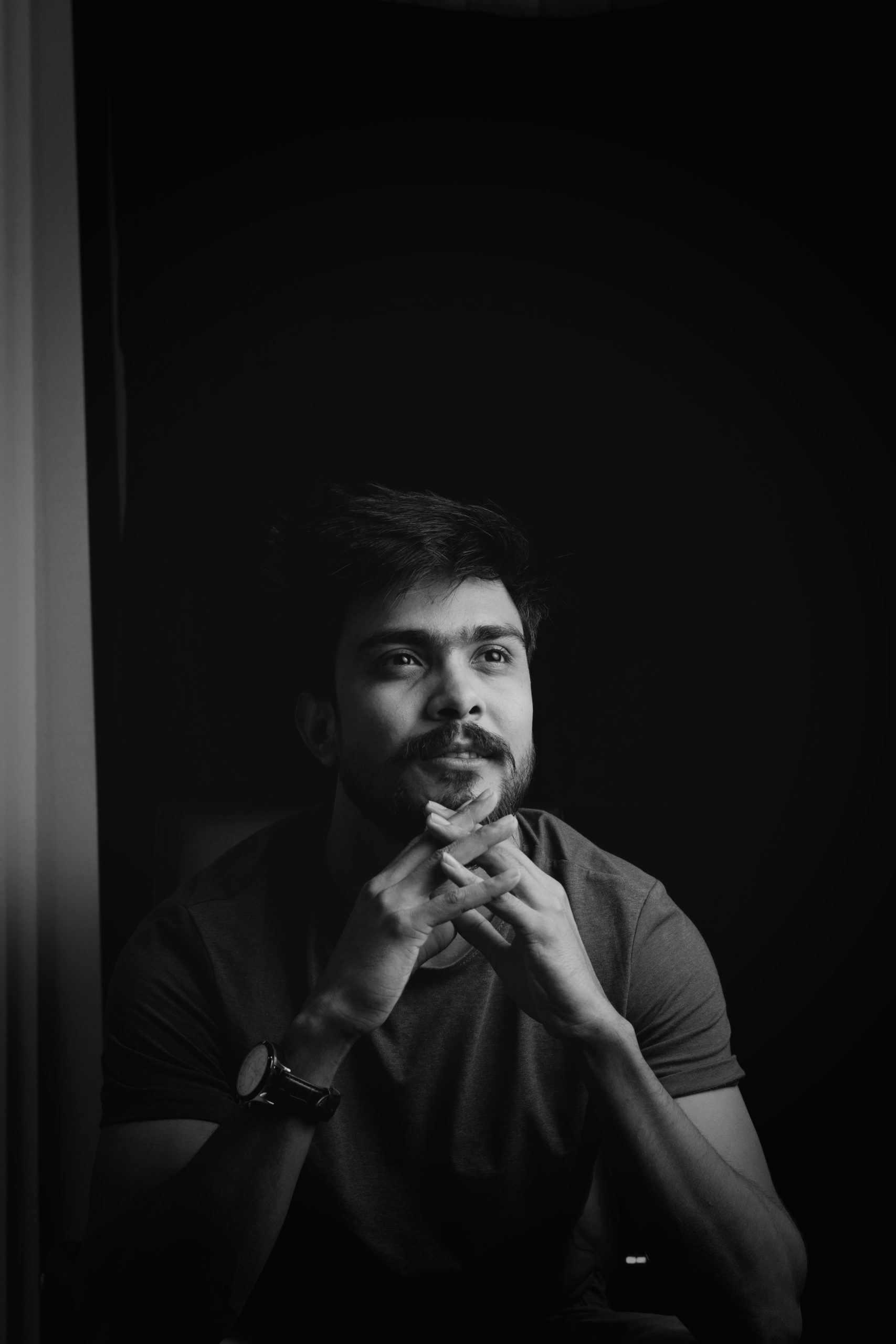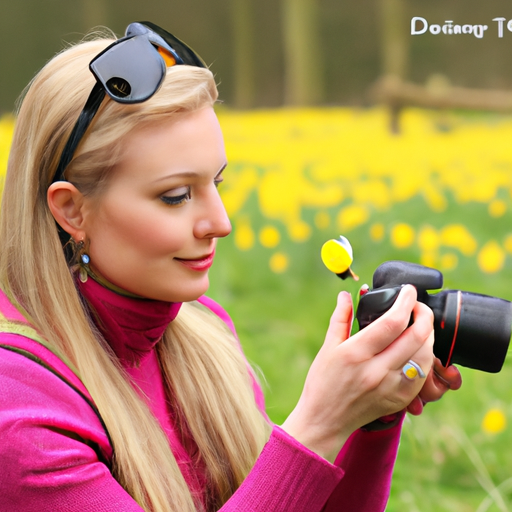If you’re in the market for a new camera, deciding between the Canon R6 Mark II and the Canon R6 might be a tough choice. Both cameras offer impressive features and capabilities, making it challenging to determine which one is the better option for you. In this article, we will compare the Canon R6 Mark II and the Canon R6, highlighting their key differences and similarities, to help you make an informed decision and find the perfect camera to suit your needs.

Design and Ergonomics
The design and ergonomics of a camera play a crucial role in determining its user-friendliness and overall shooting experience. When comparing the Canon R6 Mark II and Canon R6, both cameras boast exceptional design principles that cater to the needs of photographers.
Body Design
Both the Canon R6 Mark II and Canon R6 feature a sleek and modern body design. With a solid build quality, these cameras feel sturdy and reliable in your hands. The layout of buttons and dials is intuitively placed for easy access to essential settings, allowing you to quickly adjust parameters on the fly.
Weight and Size
When it comes to weight and size, both cameras strike a great balance. The Canon R6 Mark II and Canon R6 are compact and lightweight, making them perfect for travel and on-the-go photography. The reduced weight ensures that you can comfortably carry the camera for extended periods without experiencing fatigue.
Layout and Button Placement
The layout and button placement on these cameras have been thoughtfully designed. Both the Canon R6 Mark II and Canon R6 offer easy-to-reach buttons that are well-spaced for efficient operation. The control dials are conveniently located, allowing for seamless adjustments to aperture, shutter speed, and other settings. Overall, the ergonomic design of these cameras ensures a comfortable and intuitive shooting experience.
Image Quality and Performance
The image quality and performance of a camera are essential factors to consider before making a purchase. Let’s compare the Canon R6 Mark II and Canon R6 in terms of their sensor, ISO range, image processor, continuous shooting speed, and autofocus system.
Sensor
Both the Canon R6 Mark II and Canon R6 feature a highly capable sensor that delivers outstanding image quality. The sensors offer a high pixel count, enabling photographers to capture detailed and sharp images. With improved dynamic range and low-light performance, these cameras excel in various shooting conditions, whether it be in bright daylight or challenging low-light scenarios.
ISO Range
Having a wide ISO range is crucial for low-light photography and offers flexibility when it comes to adjusting exposure. The Canon R6 Mark II and Canon R6 offer an impressive ISO range, allowing photographers to capture stunning images even in poorly lit environments. The cameras produce clean and noise-free images across different ISO settings.
Image Processor
The image processor is the brain behind a camera’s image processing capabilities. The Canon R6 Mark II and Canon R6 are equipped with advanced image processors that ensure speedy and efficient image processing. This results in fast and accurate image rendering, reducing any delays in capturing the perfect shot.
Continuous Shooting Speed
Both the Canon R6 Mark II and Canon R6 offer impressive continuous shooting speeds. With rapid burst rates, these cameras allow you to capture action-packed moments without missing a beat. Whether you’re photographing sports or wildlife, the high-speed continuous shooting capabilities of these cameras ensure you never miss a crucial moment.
Autofocus System
The autofocus system is a critical aspect of any camera, as it determines how quickly and accurately the camera can focus on a subject. The Canon R6 Mark II and Canon R6 boast state-of-the-art autofocus systems that deliver exceptional performance. With advanced tracking capabilities and a wide array of autofocus points, these cameras provide precise and reliable autofocus, even in challenging shooting situations.
Video Capabilities
For those interested in videography, the video capabilities of a camera are crucial. Let’s compare the Canon R6 Mark II and Canon R6 in terms of their video resolutions, frame rates, video formats, recording limitations, and video features.
Video Resolutions
Both the Canon R6 Mark II and Canon R6 offer impressive video resolutions. These cameras are capable of recording high-quality videos in resolutions ranging from Full HD to 4K. Whether you’re shooting professional videos or capturing precious moments in your personal life, the video resolutions provided by these cameras ensure stunning clarity and detail in your footage.
Frame Rates
When it comes to capturing motion, frame rate becomes essential. The Canon R6 Mark II and Canon R6 offer a variety of frame rates, including standard frame rates like 24fps and 30fps, as well as higher frame rates for slow-motion footage. This versatility allows you to film in different styles and adapt to various shooting scenarios.
Video Formats
Both cameras support a range of video formats, including popular formats like MP4 and MOV. This ensures compatibility with various video editing software and easy sharing on different platforms. The ability to choose the appropriate video format based on your specific needs adds to the flexibility and convenience of these cameras.
Recording Limitations
It is important to note that while both the Canon R6 Mark II and Canon R6 offer excellent video capabilities, there are certain recording limitations to be aware of. These limitations may include factors such as recording time limits or potential overheating during prolonged video shooting. It is advisable to refer to the camera’s user manual or manufacturer’s specifications for detailed information on these limitations.
Video Features
Both cameras come equipped with a range of video features that enhance your creative possibilities. These features may include options for manual control of exposure, focus peaking for accurate focusing, built-in image stabilization for smooth handheld footage, and various picture profiles for achieving specific visual styles. The inclusion of these features allows aspiring filmmakers and videographers to unleash their creativity and capture stunning videos.
Image Stabilization
Image stabilization technology helps reduce camera shake, resulting in sharper images and smoother videos. Let’s compare the In-Body Image Stabilization (IBIS) and Lens-based Image Stabilization (IS) of the Canon R6 Mark II and Canon R6.
In-Body Image Stabilization (IBIS)
The Canon R6 Mark II and Canon R6 both feature In-Body Image Stabilization (IBIS), which is a technology that compensates for camera shake by moving the camera sensor. This enables photographers to capture sharper images, even when shooting handheld or in low-light conditions. IBIS provides stabilization benefits regardless of the lens attached to the camera, making it a valuable feature for photographers who use a variety of lenses.
Lens-based Image Stabilization (IS)
In addition to IBIS, Canon lenses often incorporate Lens-based Image Stabilization (IS) technology. IS technology compensates for camera shake within the lens itself, resulting in improved stability when shooting. When using a lens equipped with IS technology in conjunction with IBIS in the camera body, photographers can achieve even greater stabilization, allowing for highly steady shots and smooth video footage.

Connectivity
The ability to connect and transfer images seamlessly is essential for modern-day photographers. Let’s compare the wireless connectivity, image transfer capabilities, and tethering options of the Canon R6 Mark II and Canon R6.
Wireless Connectivity
Both cameras offer built-in wireless connectivity options, including Wi-Fi and Bluetooth. These features allow for easy and quick transfer of images and videos to other devices such as smartphones, tablets, or laptops. Wireless connectivity also enables convenient remote control of the camera, allowing you to capture shots without physically touching the camera.
Image Transfer
The Canon R6 Mark II and Canon R6 provide various image transfer options. With the built-in Wi-Fi capabilities, you can transfer images directly from the camera to your smartphone or computer wirelessly. This enables efficient sharing on social media platforms or immediate editing and post-processing without the need for physical media transfer.
Tethering
Tethering refers to the process of connecting a camera to a computer or device for remote control and real-time image transfer. Both the Canon R6 Mark II and Canon R6 support tethering, allowing photographers to have full control over their shooting process. Tethering is particularly beneficial when shooting in a studio or for photographers who require immediate image feedback on a larger screen.
Viewfinder and Display
A camera’s viewfinder and display play a significant role in framing and reviewing shots. Let’s compare the viewfinder types, viewfinder resolutions, touchscreen capabilities, and articulating screens of the Canon R6 Mark II and Canon R6.
Viewfinder Type
The Canon R6 Mark II and Canon R6 both feature a high-resolution electronic viewfinder (EVF). An EVF provides a live preview of the scene, allowing you to compose your shots accurately. The EVF displays relevant shooting information, such as exposure settings and focus points, ensuring a seamless shooting experience.
Viewfinder Resolution
Both cameras offer a high-resolution viewfinder, delivering crisp and detailed images. The high resolution ensures that the viewfinder image appears sharp and true to life, enabling precise composition and focusing. Whether you prefer the Canon R6 Mark II or Canon R6, you can expect a superb viewfinder experience.
Touchscreen
The presence of a touchscreen on a camera greatly enhances user interaction and quick access to settings. Fortunately, both the Canon R6 Mark II and Canon R6 feature a responsive and intuitive touchscreen. The touchscreen functionality allows for touch-to-focus, touch-to-navigate menus, and even touch-to-capture shots, making the overall operation more convenient and efficient.
Articulating Screen
An articulating screen provides photographers with the flexibility to shoot from various angles and positions. The Canon R6 Mark II and Canon R6 feature a fully articulating screen, giving you the advantage of shooting low-angle or high-angle shots with ease. This feature is particularly useful for vlogging, self-portraits, or capturing shots from ground-level perspectives.
Battery Life
The battery life of a camera determines how long you can shoot without needing to recharge or change batteries. Let’s compare the battery capacity and number of shots provided by the Canon R6 Mark II and Canon R6.
Battery Capacity
Both the Canon R6 Mark II and Canon R6 come with a powerful battery that provides sufficient capacity for extended shooting sessions. The exact battery capacity may vary depending on various factors such as continuous shooting, video recording, and power-hungry features, but you can expect a long-lasting performance from these cameras.
Number of Shots
The number of shots a camera can capture on a single battery charge depends on factors such as shooting conditions and usage patterns. The Canon R6 Mark II and Canon R6 offer impressive battery life, allowing you to take a significant number of shots before needing to recharge. This ensures that you can focus on your photography without worrying about running out of power during important moments.
Memory Cards
Choosing the right memory card for your camera is crucial for efficient storage and data transfer. Let’s compare the card slot configuration and card compatibility of the Canon R6 Mark II and Canon R6.
Card Slot Configuration
Both the Canon R6 Mark II and Canon R6 feature a dual card slot configuration. This means you can insert two memory cards simultaneously, providing backup storage or the ability to alternate between cards for extended shooting sessions. The dual-card slots add a layer of convenience and reliability to these cameras.
Card Compatibility
When it comes to memory card compatibility, both cameras support popular formats such as SD, SDHC, and SDXC memory cards. These are widely available and come in various storage capacities, allowing you to choose the card size that best suits your shooting needs. The card compatibility of the Canon R6 Mark II and Canon R6 ensures that you have ample storage for your images and videos.

Price and Value
Price and value are important considerations when comparing cameras. Let’s analyze the price comparison and features-to-price ratio of the Canon R6 Mark II and Canon R6.
Price Comparison
The exact pricing of the Canon R6 Mark II and Canon R6 may vary depending on your location and time of purchase. It is advisable to check with authorized retailers or visit the manufacturer’s official website for accurate pricing information. Comparing the prices of these cameras will help you make an informed decision based on your budget and desired features.
Features-to-Price Ratio
When evaluating the value of a camera, it is essential to consider the features offered in relation to its price. Both the Canon R6 Mark II and Canon R6 provide a wide range of advanced features and cutting-edge technology. Their performance, image quality, and video capabilities justify their price point, making them excellent choices for photographers seeking high-quality results.
Conclusion
The Canon R6 Mark II and Canon R6 are exceptional cameras that cater to the needs of photographers and videographers alike. Let’s summarize the pros and cons, best use cases, and final verdict of these cameras.
Pros and Cons
The Canon R6 Mark II and Canon R6 boast several advantages, including their advanced sensor technology, impressive image stabilization capabilities, and top-notch autofocus systems. Both cameras also offer a wide range of video features and seamless wireless connectivity options. On the downside, there may be specific limitations to consider, such as recording time restrictions or potential overheating during prolonged video shooting.
Best Use Cases
The Canon R6 Mark II and Canon R6 are well-suited for various photography genres, including portrait, landscape, sports, and wildlife. Their advanced features and exceptional image quality make them reliable choices for professional photographers, while their user-friendly interface and compact design appeal to enthusiasts and hobbyists as well. Additionally, the video capabilities of these cameras make them excellent tools for aspiring videographers and content creators.
Final Verdict
Choosing between the Canon R6 Mark II and Canon R6 ultimately depends on your specific needs and preferences as a photographer or videographer. Both cameras offer outstanding image quality, advanced features, and reliable performance. Consider factors such as budget, desired shooting capabilities, and intended use cases to make an informed decision. Regardless of your choice, the Canon R6 Mark II and Canon R6 are sure to deliver exceptional results and unlock your creative potential.

